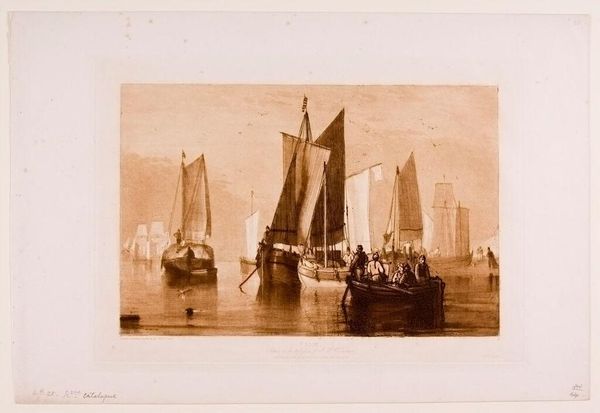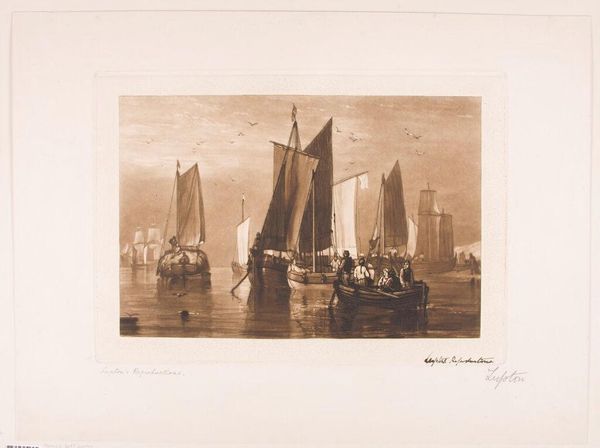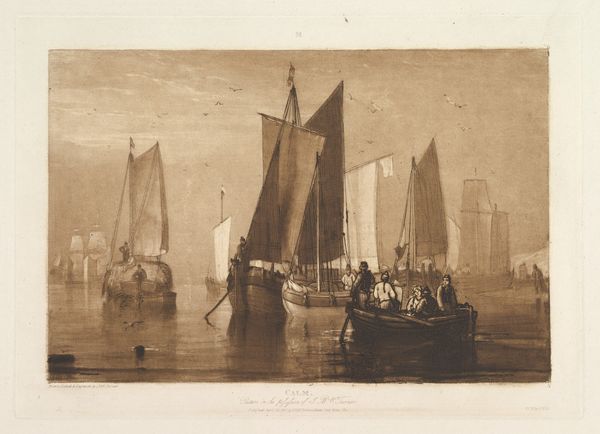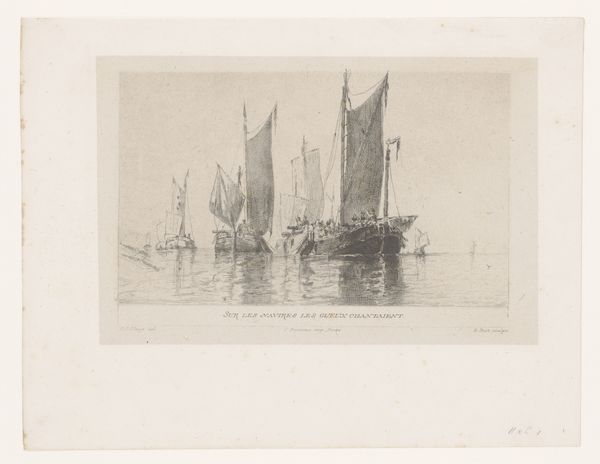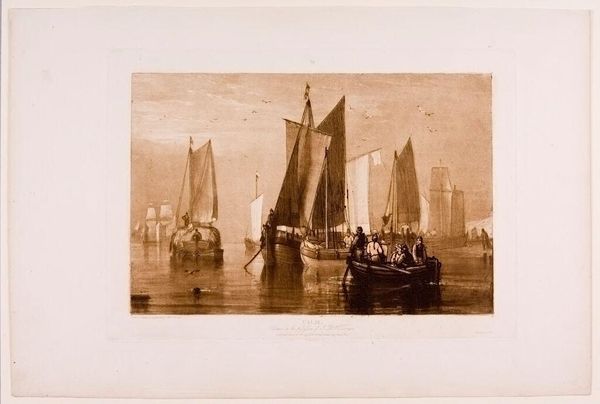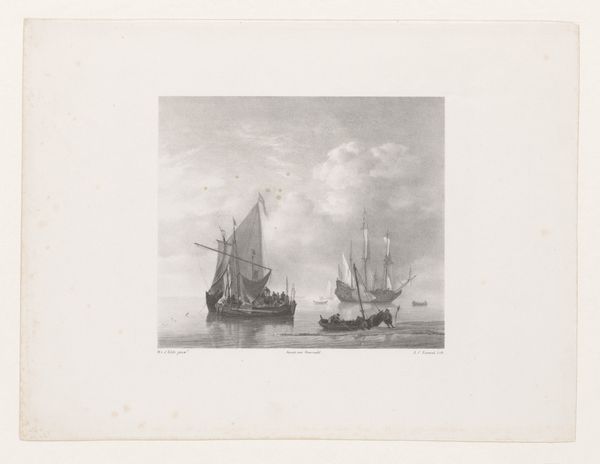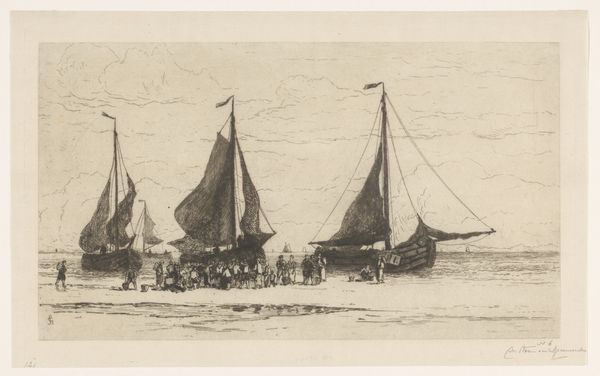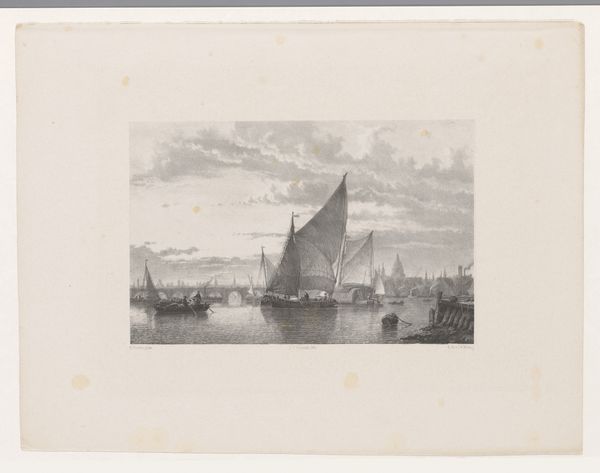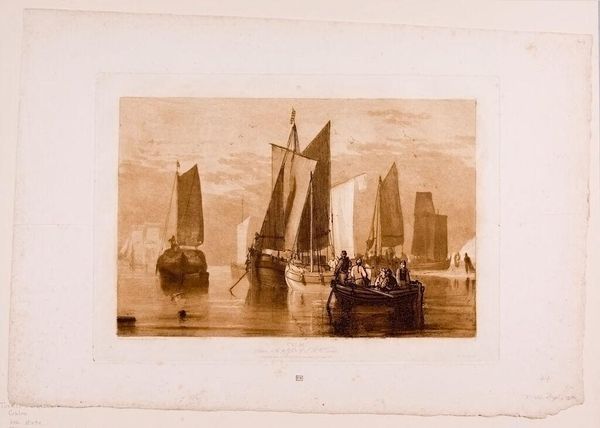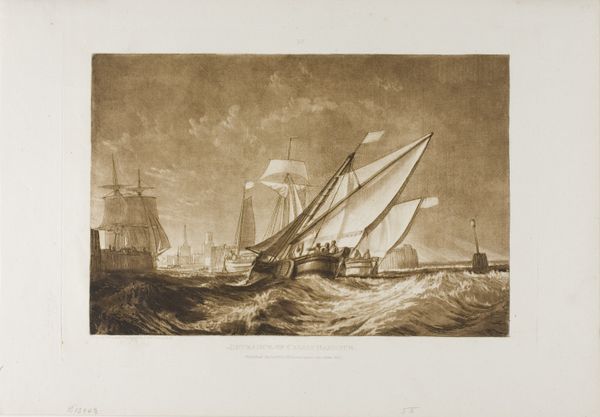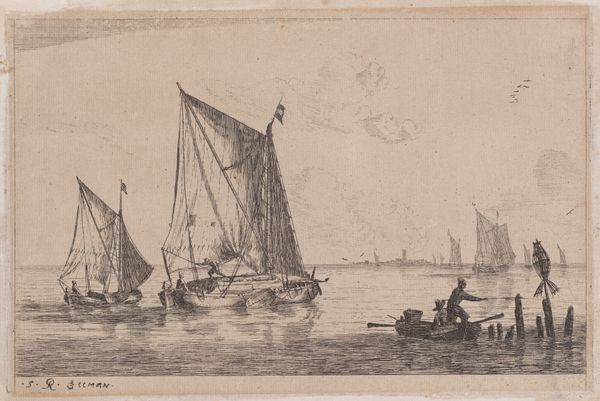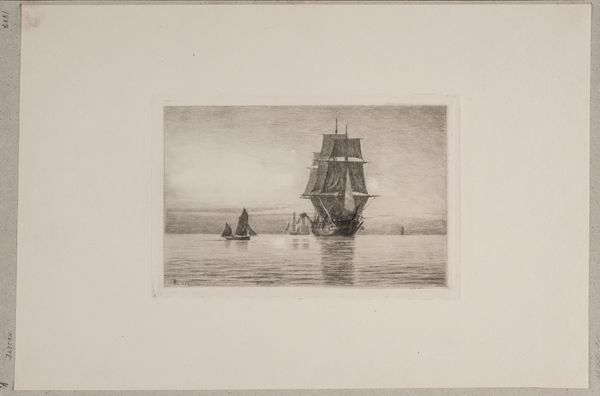
Calm, plate 44 from Liber Studiorum Possibly 1812
0:00
0:00
drawing, print, etching, paper
#
drawing
# print
#
etching
#
landscape
#
paper
#
england
#
romanticism
Dimensions: 178 × 268 mm (image); 216 × 305 mm (plate); 268 × 362 mm (sheet)
Copyright: Public Domain
Editor: This is “Calm, plate 44 from Liber Studiorum” by J.M.W. Turner, possibly from 1812. It's an etching, a monochromatic print with different ships sailing or moored on calm waters. The scene feels so still, almost expectant. What do you see in this piece, beyond the pretty boats? Curator: I see a deeply political work, despite its placid surface. Turner, at the height of the Napoleonic Wars, was keenly aware of England's naval power. These boats aren't just picturesque; they represent a crucial lifeline, controlling trade and communication during a time of intense national anxiety and transformation. Consider the economic impact of naval blockades on marginalized communities. Editor: So, it’s not just about beauty; it’s about power? The dominance England exerted on the world stage through its navy? Curator: Precisely. And who benefited from this power? Whose labor fueled these ships and the empire they sustained? The calm belies the social unrest brewing beneath the surface. Romanticism, generally, yearned for an ideal rooted in nationhood, but consider how identity was policed during that time and how this narrative might erase minority contributions or resistances to Britain's project. What might the inclusion, or erasure, of Black sailors during that era reveal, or, the indigenous populations from which these raw materials might come? Editor: I never thought about it like that. I was focused on the artistic style. I see now how looking at the historical and cultural context opens up new avenues for understanding the work. Curator: Exactly. Art doesn't exist in a vacuum. Exploring the intersectional narratives of identity, power, and representation enriches our experience of the art of the past. Editor: Thanks for pointing this out. I now realize there's so much more to this image than I initially saw.
Comments
No comments
Be the first to comment and join the conversation on the ultimate creative platform.
